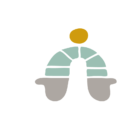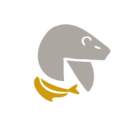Our vision, mission
and values
Our history

Prior to the 1990s, the Quebec government offered Nunavimmiut the possibility of receiving addiction services at Pavillon Foster in Montreal.
Residents of the 14 Inuit communities were asked to travel by air and to stay away from home for a few days or even a few months to receive the support services needed to cope with the challenges of substance use.

Then, in 1995, in response to growing needs in the region and the desire for a culturally sensitive program, Makivvik and Johnny Adams, the mayor of the northern village of Kuujjuaq, joined forces to create a community-based organization in Kuujjuatuqa (Old Chimo).
Thanks to the expertise and dedication of Dr. Thomas Gordon Brown and his team at Pavillon Foster, an English-language program specializing in addictions was created. This program was available to Kuujjuamiut only and in an outpatient setting.
Still in 1995, Isuarsivik launched a community logo contest to define the name of our organization and its visual identity. The artwork of Kuujjuamiuk Alec Gordon was selected for the true meaning of its logo, which depicted a pussy willow (avaalaqiak). The pussy willow is one of the strongest plants of the arctic and can survive the harshest elements of weather even if it sits on the tree line or tundra. It symbolizes resiliency. Since the willow renews itself and regrows every year in all parts of Nunavik, it became clear for our organization that we needed to associate this resilient bud with the life of people of the land who want to be reborn or to start afresh from vicious circle linked to addiction and trauma.
As the years passed, it became increasingly clear to the Nunavik Regional Board of Health and Social Services and Makivvik Corporation that Isuarsivik’s services were needed for people across the region.
It was time to provide more services to people dealing with substance abuse in Nunavik. In 1998, Isuarsivik agreed to open its residential program for all JBNQA beneficiaries struggling with substance abuse.

In the early 2000s, Isuarsivik faced several challenges with organizational and financial challenges. But in 2006, a new leadership reinvigorated Isuarsivik’s mandate.
The volunteer Board of Directors decided to invest in developing a distinct approach to substance abuse rehabilitation. They built on the experience of a group of dedicated professionals and community-based volunteers from Nunavik and together, designed a custom-made healing program based on Inuit values addressing Inuit-specific traumas and complemented by best practices in the field of addictions.

In 2016, Isuarsivik Treatment Centre became Isuarsivik Regional Recovery Centre and its Board of Directors adopted a Development Plan in response to the growing needs and priorities identified by the Inuit of Nunavik.
The plan called for the construction of a new building to increase its capacity to welcome guests and allow for the delivery of new in-house programs and services, especially for families and pregnant women. In parallel, the continued care services were developed to provide community-based support for people across the region.
Thanks to the Nunavik Regional Board of Health and Social Services, the Kativik Regional Government and Makivvik Corporation, Isuarsivik was able to realize its global $43.5M construction project with the financial contribution of the Government of Canada – from both Infrastructure Canada and Indigenous Services Canada – and the Quebec Government.

In 2019, Isuarsivik celebrated its 24th anniversary with several milestones:
- the groundbreaking of the new facility and access road construction,
- the construction of a first fourplex for staff, and
- the revamping of its branding to beautify and modernize the original art.

In 2020, the global pandemic caused by COVID-19 harmed Isuarsivik’s services and construction project timeline and funding.
Once again, the Isuarsivik family showed resiliency and flexibility to adapt and secure additional funding to kick off the construction of the new facility in 2021.

In early 2022, Isuarsivik launched one of the largest recruitment campaigns in Nunavik, under the tagline ‘Ilaugitsi’.
This successful campaign gathered over 200 candidates and filled the 27 vacant positions that were necessary to offer the new services in the enlarged installation. In January 2023, Isuarsivik moved in its new building and got the keys of two additional fourplexes for staff.

In early 2023, Isuarsivik onboarded over 55 employees through an inclusive, complete, and exhaustive training approach.
On April 12, the Centre also welcomed its first guests in its new facility, including several youths, to attend the new 8-week Collective Healing Program. The new program and healing environment offer a unique recovery experience designed exclusively for Inuit of Nunavik to help them recover from past traumas and overcome substance abuse behaviours.
Isuarsivik is looking forward to celebrating its 30th anniversary in 2025 on these solid new foundations and will continue to trailblaze the way to support recovery in the whole of Nunavik region.
Our vision
Loving, resilient, and confident Inuit living in safe and healthy communities.
Our mission
Delivering holistic and culturally sensitive healing programs for Nunavimmiut to enhance their inner strength and wellbeing.
Our values
Isuarsivik is an Inuktitut word meaning ‘A place to heal’.

Inuuqatinnik suusutsasiarniq (Inuuqatigiitsianiq)
Respecting others, maintaining good relationships and caring for people

Tunnganarniq
Fostering good spirits by being open, welcoming and inclusive

Pijitsiniq
Serving and providing for family and/or community

Aajiiqatigiinniq/
Qanurtuuqatigiinniq
Decision making through discussion and consensus

Pijariursaniq/Ilinianiq
Development of skills through observation, mentoring, practice, and effort

Ikajurtigiinniq/
Katutjiqatigiinniq
Working together for a common cause

Qanurtuuniq/
Qanurtuurunnaniq
Being innovative and resourceful

Avatittinik ippigusutsianiq
Respect and care for the land, animals and the environment
